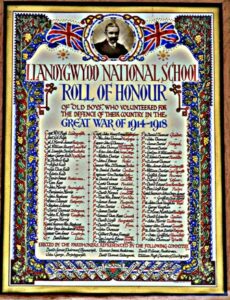Llandygwydd is a small village which sits along the River Teifi, around seven miles north-west of Newcastle Emlyn. There are several war memorials in the village, which include a memorial to the former pupils of Llandygwydd School who fell during the Great War and a further memorial to the former pupils who served during the Great War. There are also memorials to three men who fell during the Great War which are inside St. Tygwydd’s Church, and another memorial to the men who fell during World War Two. This page commemorates the former pupils of Llandygwydd School. Photographs of the memorials were kindly supplied by Raymond Jones.
The Great War, 1914-1918
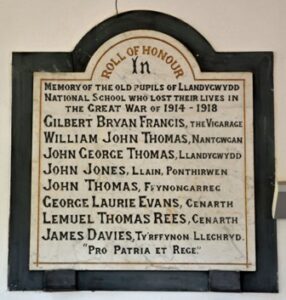
James Davies, Lance Corporal, S/2277, Rifle Brigade. James was the son of John and Margaret Davies, of Tyrffynon, Llechryd. He enlisted into the Rifle Brigade at Winchester on 4 September 1914, and was posted to France on 21 July 1915 joining the 1st Battalion, Rifle Brigade. He was later transferred to the 13th Battalion, Rifle Brigade, which was attached to 111 Brigade, 37th Division. The division saw its first major action during the attack on the Gommecourt Salient, the diversionary attack on the Somme on 1 July 1916, and suffered heavy casualties throughout the offensive. It fought during the First Battle of the Scarpe, and captured Monchy le Preux during the Battle of Arras in 1917, and also took part in the Second Battle of the Scarpe, and the Battle of Arleux before moving north to Ypres. Here, the division fought throughout Third Ypres, at the Battle of the Menin Road, the Battle of Polygon Wood, the Battle of Broodseinde, the Battle of Poelcapelle, the First Battle of Passchendaele and the Second Battle of Passchendaele. James survived all of these terrible ordeals, but was killed during a relatively peaceful period of the war, on 1 March 1918, aged 34. He is buried in Hooge Crater Cemetery, Belgium.
George Lawrence Evans, Private, South African Infantry. George was born in 1884, the son of William and Margaret Evans, of Cenarth. He had left Wales to work as an electrical engineer at the Rose Deep Gold Mine in South Africa several years prior to the war, and in August 1914 enlisted into the South African Infantry. He served in East Africa with a Motor Cycle Unit of the South African Infantry during the war, but his service took a heavy toll on his health, and he returned to South Africa after the armistice. George died at Johannesburg in the summer of 1918, and was buried there with full military honours. He is not commemorated as a war casualty by the CWGC.
Gilbert Bryan Francis, Private, 2138, New Zealand Expeditionary Force. Gilbert was born at Llandygwydd Vicarage on 17 October 1886, the Son of Rev. David Francis, Llandygwydd, and the Husband of Amy Francis, of Northampton. He was educated at Llandovery College from 1898 to 1904, and emigrated on 4 December 1912, becoming a Farmer and residing at the home of H. Nelson, Konini, Pahiatua, New Zealand. Gilbert enlisted on 15 February 1915, into the 5th (Wellington) Rifles, NZEF, and in June 1915 was posted to the Dardanelles. On 15 August 1915, Gilbert joined the 17th Battalion, (B Company) 5th Wellingtons on Gallipoli as a replacement, after the Battalion’s heavy casualties suffered at Chunak Bair. On 3 September 1915 Gilbert was struck down with fever and admitted to No.16 Casualty Clearing Station on the Peninsula. From Gallipoli he was transferred to Mudros, and later embarked for Malta on the Hospital Ship ‘Neuralia’. By 4 October 1915 Gilbert’s health had deteriorated. Gilbert died of enteric fever at St. George’s Military Hospital, aged 29, on 13 November 1915. He is buried in Pieta Military Cemetery, Malta.
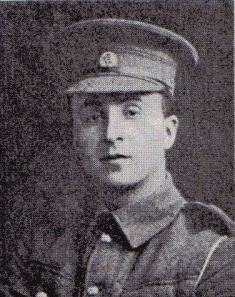
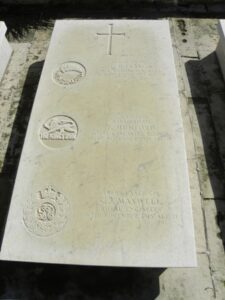
Lemuel Thomas Rees, Private, 29573, South Wales Borderers. Lemuel was born at Llandygwydd in 1895, the son of John and Sarah Rees. The family later resided at Blaenanerch. He enlisted at Brecon into the South Wales Borderers, and was posted to France in 1916, joining the 6th Battalion, South Wales Borderers, which was the Pioneer Battalion to the 25th Division. The Division had been in France since 26 September 1915, and defended Vimy Ridge against a German attack in May 1916. They then moved to the Somme, and attacked on 3 July near Thiepval. They fought throughout the Battle of the Somme, and then moved to Ploegsteert, where they held the line for the months leading up the Battle of Messines in June 1917. After fighting at Messines, the Division moved north, and fought at Pilckem, before moving south again, where they took up positions around Bullecourt in March 1918, where it was used to reinforce the badly depleted British units that were hit in the area by the German Spring Offensive. They moved north to Flanders to rest on 30 March 1918, but were caught up in the German Lys Offensive, suffering heavy casualties before being moved to the Aisne to rebuild. On 26 May 1918 they took up positions south of the Aisne, to guard against a predicted German Offensive, which hit them the following day, and during the coming days the Division was virtually annihilated. The Division moved to England to rebuild, returning to France in September, and taking part in the 100 days offensive. Lemuel had survived the war, but had been evacuated sick to Wimille. He died there on 13 November 1918, aged 23, and is buried in Terlincthun British Cemetery, Wimille, France.
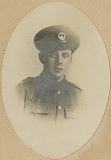
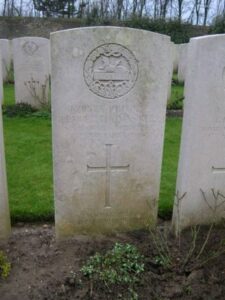
John Thomas, Private, G/20838, East Kent Regiment. John was born at Northampton in 1894, the son of David and Margaret Thomas. The family later resided at Ffynongarreg, Llandygwydd. John resided at Llangynin prior to the war, and enlisted at Carmarthen into the army. John was posted to the 1st Battalion, East Kent Regiment, which was in France attached to 16 Brigade, 6th Division. The Division had been on the Western Front since 10 September 1914, and had fought on the Aisne. It had fought in Flanders until 1916 when it took part in the Somme offensive. In 1917 it had fought at Arras and Cambrai. In the spring of 1918 the Division was one of those hit by the German Offensive on the Somme, which had been launched on 21 March, and took part in desperate fighting. John was killed on the first day of the offensive, on 21 March 1918, aged 25. He has no known grave, and is commemorated on the Arras Memorial, France.
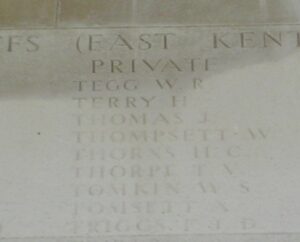
John George Thomas, Sapper, 44403, Royal Engineers. John was the son of Thomas and Martha Thomas, of Llandygwydd. John enlisted at Carmarthen into the Royal Engineers, and landed in France on 19 July 1915 with the 81st Field Company, Royal Engineers, which was attached to the 19th (Western) Division. The Division saw its first major action at the Battle of Loos on 25 September 1915, and the following year made a name for itself at the Battle of the Somme. During 1917 the Division fought at the Battle of Messines, and during the Third Battle of Ypres. In 1918 the Division was caught up in the German Spring Offensive near St. Quentin, where they suffered terrible casualties before being evacuated to Messines to rebuild. Unfortunately the Germans launched a fresh attack here in April 1918, and the 19th Division was again battered, moving south to the quieter French sector to rebuild. Lightning was to strike the division three times, as the German’s launched an offensive on the Aisne on 27 May 1918. John was killed in action here on 6 June 1918. He was 41 years old, and is buried in Marfaux British Cemetery, France.
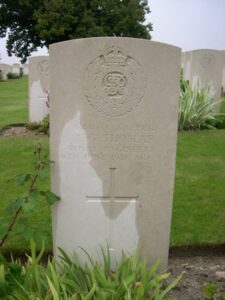
William John Thomas, Private, 75173, Royal Army Medical Corps. William was the son of Mary Thomas, of Ponthirwaun, Llechryd. He resided with his wife, Martha Thomas, at 12, Glogue Terrace, Glogue, prior to the war, and enlisted at Cardigan into the Royal Army Medical Corps. William was posted to France, probably early in 1917, where he joined the 54th Field Ambulance, Royal Army Medical Corps, which was attached to the 18th (Eastern) Division. In March 1917 the Division followed the German Retreat to the Hindenburg Line, and in May took part in the Third Battle of the Scarpe, which was part of the Arras Offensive. Later that year the Division fought at Third Ypres. In 1918 the Division were stationed south of the Somme, and were one of the Divisions hit there by the German Spring Offensive, which was launched on 21 March 1918. They fought at the Battle of St Quentin, and suffered terrible casualties, and then took part in the Battle of the Avre and the Actions of Villers-Brettoneux. On 8 August 1918 they formed part of the force which attacked the German positions around Villers Brettoneux, south of the Somme Valley, during the Battle of Amiens, and then took part in the Battle of Albert, which began the great push by the Allies which ended the war. William was killed in action during fighting at Franvillers on 22 August 1918. He was 24 years old, and is buried in Franvillers Communal Cemetery Extension, France.
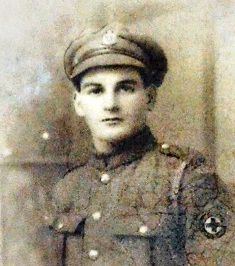
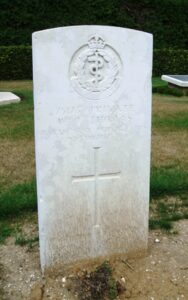
Llandygwydd National School
Roll of Honour
Of Old Boys Who Volunteered For
The Defence Of Their Country In The
Great War Of 1914-1918
